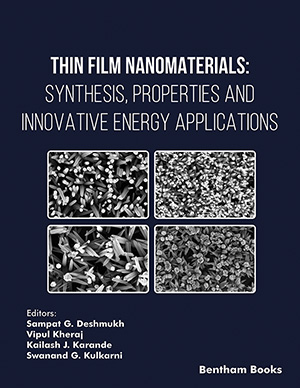
Abstract
The success of anti-cancer therapy largely relies on the development of high-efficient, low-toxic, long-circulated, and cancertargeted drug delivery systems. Currently used pharmaceutical nanocarriers, such as polymeric nanoparticles (NPs), liposomes, micelles, nanoemulsions, and many others demonstrate a variety of useful properties, including long circulation in the blood allowing for their accumulation in cancer sites with fenestrated vasculature and poor lymphatic drainage. Surface-modification of nanocarriers is attractive for their enhanced functions on imaging, targeting and delivery. Due to various targeting ligands attached to the surface of the nanocarriers, they could prolong circulation time, increase drug bioavailability, reduce undesirable side effects, and minimize non-specific uptake thus allow for specific cancer-targeting to certain target cells within the cancer sites or even intracellular localization to target organelles. This review highlights the different types of the surface modification of various drug or gene loaded nanocarriers for cancer therapy, focusing on their modification methods, advantages, applications and the probable associated drawbacks.
Keywords: Nanocarriers, surface-modification, cancer therapy, drug and gene delivery
Current Nanoscience
Title: Surface Modification of Nanocarriers for Cancer Therapy
Volume: 5 Issue: 2
Author(s): Wang-yang Yu and Na Zhang
Affiliation:
Keywords: Nanocarriers, surface-modification, cancer therapy, drug and gene delivery
Abstract: The success of anti-cancer therapy largely relies on the development of high-efficient, low-toxic, long-circulated, and cancertargeted drug delivery systems. Currently used pharmaceutical nanocarriers, such as polymeric nanoparticles (NPs), liposomes, micelles, nanoemulsions, and many others demonstrate a variety of useful properties, including long circulation in the blood allowing for their accumulation in cancer sites with fenestrated vasculature and poor lymphatic drainage. Surface-modification of nanocarriers is attractive for their enhanced functions on imaging, targeting and delivery. Due to various targeting ligands attached to the surface of the nanocarriers, they could prolong circulation time, increase drug bioavailability, reduce undesirable side effects, and minimize non-specific uptake thus allow for specific cancer-targeting to certain target cells within the cancer sites or even intracellular localization to target organelles. This review highlights the different types of the surface modification of various drug or gene loaded nanocarriers for cancer therapy, focusing on their modification methods, advantages, applications and the probable associated drawbacks.
Export Options
About this article
Cite this article as:
Yu Wang-yang and Zhang Na, Surface Modification of Nanocarriers for Cancer Therapy, Current Nanoscience 2009; 5 (2) . https://dx.doi.org/10.2174/157341309788185370
| DOI https://dx.doi.org/10.2174/157341309788185370 |
Print ISSN 1573-4137 |
| Publisher Name Bentham Science Publisher |
Online ISSN 1875-6786 |
Call for Papers in Thematic Issues
Advanced Inorganic Nanocomposites and their Emerging Applications
This special issue will highlight developments in the recent trends in the synthesis of metal oxides, nanoclusters, biomaterials, 2D nanomaterials, nanocrystals, nanocomposites, etc., and their applications in electrochemical systems, tissue regeneration, energy storage and harvesting, sensors, etc. The novelty of the methods in the chemical synthesis, as well as their ...read more
Advanced Nanotechnology in Forensic Science: Revolutionizing Fingerprint Identification and Crime Scene Analysis
This special issue aims to provide a comprehensive exploration of the innovative fusion between nanotechnology and forensic science. It aspires to bridge the gap between traditional investigative techniques and cutting-edge nanoscale applications, envisioning a paradigm shift in forensic analysis. By compiling the expertise of multidisciplinary experts, the book's objectives include ...read more
Graphene and 2D Materials for Energy Storage and Conversion.
This thematic issue will discuss the recent advances in graphene-based nanomaterials for different energy technologies. Graphene possesses a high surface area, and stable structure and exhibits many interesting electronic, optical, and mechanical properties due to its 2D crystal structure. Graphene is of both fundamental interest and suitable for a wide ...read more
Nanopathology; A Promising Approach for Targeted Cancer Treatment
Cancer is the most challenging diseases in treatment worldwide. Recently, the nanotechnology opened the gate for targeting the cancer as a promising therapy. The small size and exceptional properties of nanoparticles give it several advantages for easily targeting of cancerous cells. Furthermore, this advantage allows them to easily penetrate deeply ...read more
Related Journals
 14
14
- Author Guidelines
- Graphical Abstracts
- Fabricating and Stating False Information
- Research Misconduct
- Post Publication Discussions and Corrections
- Publishing Ethics and Rectitude
- Increase Visibility of Your Article
- Archiving Policies
- Peer Review Workflow
- Order Your Article Before Print
- Promote Your Article
- Manuscript Transfer Facility
- Editorial Policies
- Allegations from Whistleblowers
Related Articles
-
Fluorescence Imaging in Cancerology
Current Molecular Imaging (Discontinued) Alkaloid-Metal Based Anticancer Agents
Current Topics in Medicinal Chemistry HSV-1 Viral Oncolysis and Molecular Imaging with PET
Current Cancer Drug Targets Anti-cancer Drug Discovery: Update and Comparisons in Yeast, Drosophila, and Zebrafish
Current Molecular Pharmacology The Role of CD40 Expression in Dendritic Cells in Cancer Biology; A Systematic Review
Current Cancer Drug Targets Recent Advances In Developing Novel Anti-Cancer Drugs Targeting Tumor Hypoxic and Acidic Microenvironments
Recent Patents on Anti-Cancer Drug Discovery Adaptor Protein 3BP2 and Cherubism
Current Medicinal Chemistry The Role of Integrins in Glioma Biology and Anti-Glioma Therapies
Current Pharmaceutical Design VK<sub>2</sub> Promotes Osteogenic Differentiation of BMSCs against High Glucose Exposure via Modulation of Intracellular Oxidative Stress
Current Pharmaceutical Design Extracellular ATP and Neurodegeneration
Current Drug Targets - CNS & Neurological Disorders Translocator Protein (TSPO) and Neurosteroids: Implications in Psychiatric Disorders
Current Molecular Medicine KIAA0101 in Malignant Pleural Mesothelioma: A Potential Diagnostic and Prognostic Marker
Combinatorial Chemistry & High Throughput Screening Bypassing Cancer Resistance by Antagonizing “Inhibitor of Apoptosis Proteins” (IAPs)
Current Signal Transduction Therapy Functional Role of Glycosphingolipids in Cancer
Current Medicinal Chemistry Intravoxel Incoherent Motion Diffusion-weighted Magnetic Resonance Imaging combined with Texture Analysis in Predicting the Histological Grades of Rectal Adenocarcinoma
Current Medical Imaging Heptahelical Receptors for Lysolipids in Lymphocytes as Targets for Therapeutic Intervention
Drug Design Reviews - Online (Discontinued) Molecular Subgrouping of Medulloblastoma: Impact Upon Research and Clinical Practice
Current Pediatric Reviews The mTOR/4E-BP1/eIF4E Signalling Pathway as a Source of Cancer Drug Targets
Current Medicinal Chemistry Design, Synthesis and Biological Evaluation of 4, 6-Coumarin Derivatives as Anti- Cancer and Apoptosis-Inducing Agents
Anti-Cancer Agents in Medicinal Chemistry Peptide-Drug Conjugate: A Novel Drug Design Approach
Current Medicinal Chemistry






















